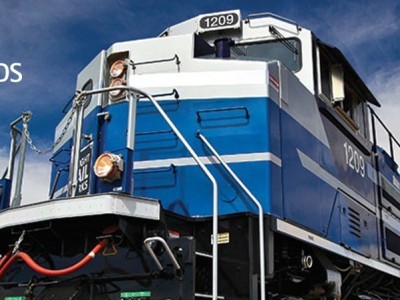Global Railcar IoT Digitization revenues to exceed US $20B by 2032
4 hours agoEntrance of new players in the railcar digitalization space points towards a healthy adoption outlook in North America and Europe
The freight rail industry has been receiving significant investments to digitize operations. According to global technology intelligence firm ABI Research, revenues for rail car IoT in freight rail will surpass US$20 billion by 2032.
“The global railcar telematics market is driven by the increasing demand for efficient, safe, and cost-effective transportation systems. This expansion can be attributed to advancements in digitalization and the integration of IoT technologies due to heightened emphasis on real-time data analytics enabling preventive maintenance,” explains Adhish Luitel, Principal Analyst at ABI Research.
Vendors like Amsted Digital, Wabtec, Nexxiot, and ZTR are some of the emerging players in this space within North America. In addition to this, RailPulse, a coalition created by leading railcar owners in North America, including Class 1 and 2 railroads, lessors, and rail-car-owning shippers, with the goal of pushing rail digitization is also driving the adoption of digital solutions.
Unlike Europe, the North American market is notoriously underpenetrated when it comes to IoT-based visibility. North America presents a large Total Addressable Market (TAM) of nearly 2 million railcars. So far, machine vision and sensor-based inspection devices mounted on the side of the tracks, usually at rail-grade crossings, have been at the forefront.
“Rail braking inspections are critical to ensure safety and compliance in the industry. These checks verify that the air brake system is functioning properly across the entire train, which can span over a mile in length. However, the process can be time-consuming as manual inspection for each car requires constant coordination between the train crew and the control center. This is when IoT technologies can provide efficiency gains,” concludes Luitel.
These findings are from ABI Research’s Rail Freight Data market data report. This report is part of the company’s Supply Chain Management and Logistics research service, which includes research, data, and ABI Insights. Market Data spreadsheets are composed of deep data, market share analysis, and highly segmented, service-specific forecasts to provide detailed insight into where opportunities lie.
Similar Stories
Freespace Robotics partners with Matthews Automation
Partnership to Drive Adoption of Next-Generation High-Speed, High-Density Storage and Retrieval Solutions for Warehouse and Last Mile Operations
View ArticleKaleris honored with 2024 Top Software & Tech Award
Kaleris, a leading provider of supply chain execution and visibility software was recently honored with the 2024 Top Software & Tech Award which recognizes innovative software and technology that improve…
View Article
Exploring AI use cases in supply chain and logistics
View Article
Verisk launches CargoNet® RouteScore API to combat mounting cargo theft
View Article
Outrider deploys reinforcement learning AI to enhance distribution yard throughput
View Article
AAR reports rail traffic for the week ending January 18, 2025
View ArticleGet the most up-to-date trending news!
SubscribeIndustry updates and weekly newsletter direct to your inbox!





